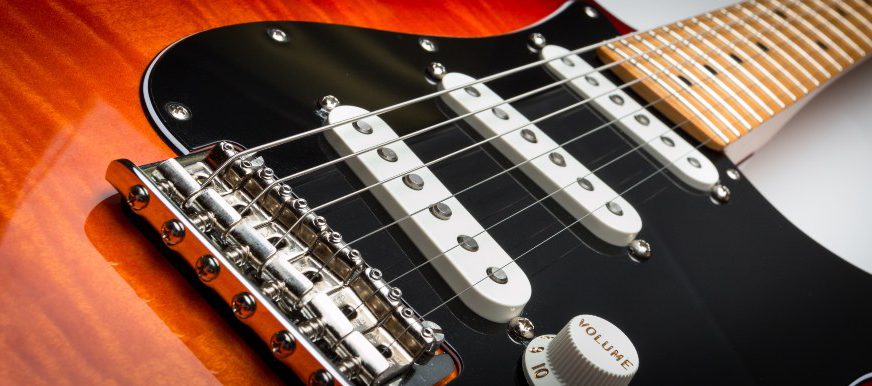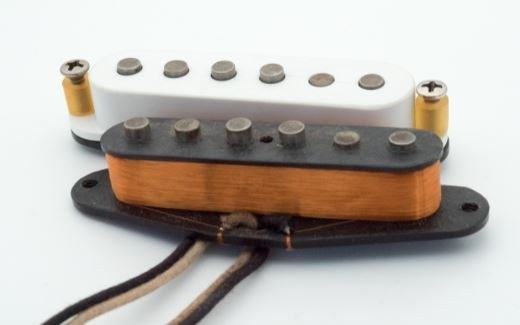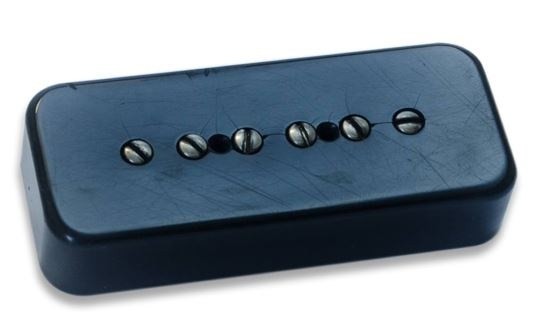« Everything about different types and their construction »
In addition to amplifiers and amplifier tubes, the pickups used also play a crucial role in the sound of an electric guitar. As common and taken for granted as it is for every guitarist to use single-coils and humbuckers, there is often little knowledge about the structure and functioning of these components. In this article, we aim to shed some light on the question of how pickups for guitars work and provide a closer look at the structure and operation of pickups for the guitar. But don’t worry – you don’t need a physics degree to understand how the coils work!
A brief history of pickups
Before we look closer at how pickups work, let’s take a quick journey into the history of these essential components for us guitarists. With the rise of jazz and a great enthusiasm for more modern music genres, engineers of the 1930s encountered an entirely new problem: Acoustic instruments needed to be made audible for performances in front of large audiences – the signal needed to be amplified.
In 1931, Adolph Rickenbacker (a name that should be very familiar to bassists in particular) and Georg Beauchamp managed to develop the precursor to today’s pickup. Just five years later, the young company Gibson introduced the first guitar with an electric pickup to the market. The Gibson ES-150 became the first commercially successful guitar with this new technology.
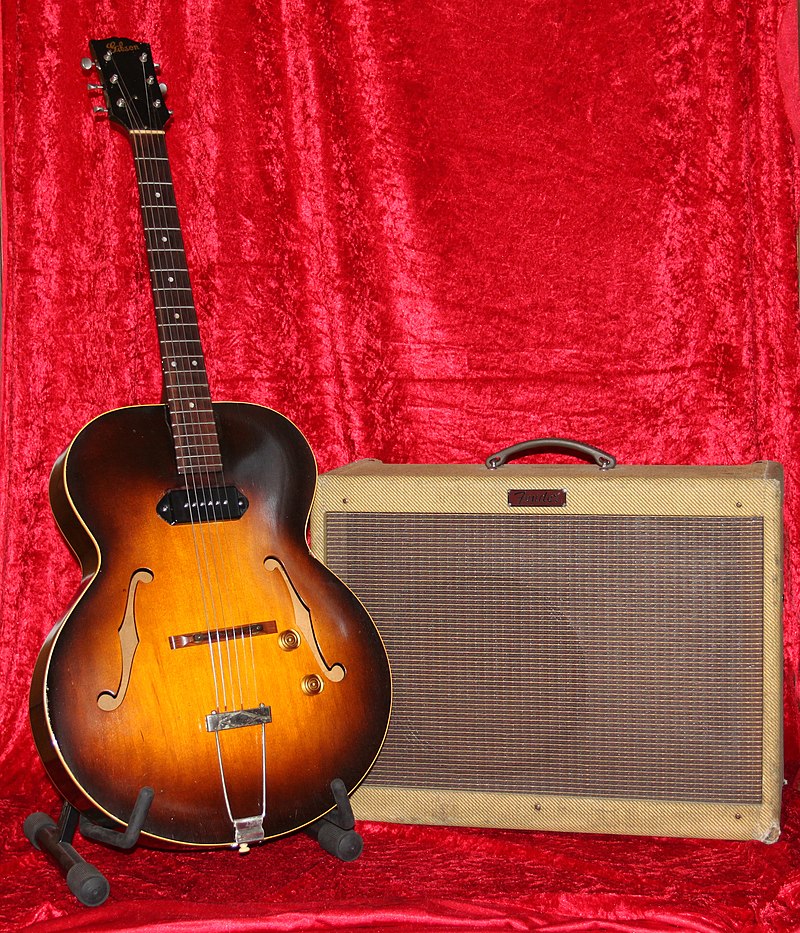
The issue with the early versions of the electric guitar at the time was the vibration behavior of the hollow-body construction, which led to strong feedback at high volumes. It was only with the first production solid-body electric guitar, the Fender Telecaster, that this problem was resolved. This marked the triumph of the electric guitar!
Basics, Structure, and Components
The question of how pickups work is closely related to the physical principle of electromagnetic induction. However, to generate an electronic signal from the string’s motion, all components must work together. There are various types that differ in their structure and operation. In the following part of our article, we will initially introduce the passive pickup with a single coil, which is the simplest design. This construction involves the following individual components:
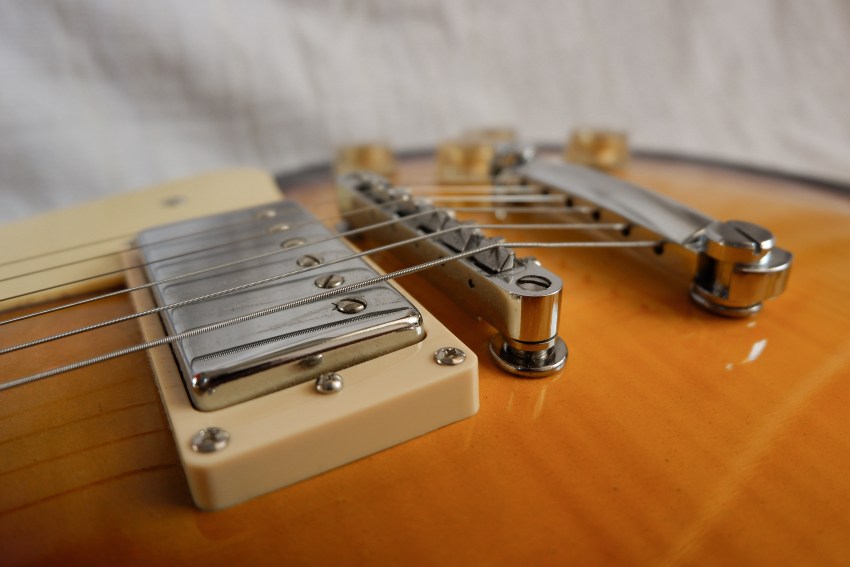
Magnets
The core element of a passive pickup is always permanent magnets. These magnets are placed in the center of the pickup, either as bars or as several cylindrical rod magnets. Magnets with an alloy of aluminum, nickel, and cobalt, known as AlNiCo, are commonly used. Nowadays, ceramic magnets or ferrite magnets are also used, depending on the desired output. The general rule is that the stronger the magnet, the stronger the pickup’s signal.
Coil
In addition to the magnets, the coil is of particular importance for the operation of this component. A significant 4,000 to 10,000 windings of very fine copper wire are wrapped around the magnets. There are different approaches to the winding process, distinguishing between machine winding and manual winding.
Casing and Wax
To be able to fit precisely into each guitar, pickups are installed in a specific shape, also known as a casing. This allows the delicate coils to be installed without compromising the functionality of the components. Often, the coils are soaked in paraffin wax. This helps to suppress and largely prevent unwanted background noise (referred to as microphony).
How Does a Pickup Work?
Classic pickups are passive components and generate the electronic signal of the instrument through electromagnetic induction. Here, the composition of the guitar strings used is initially important. The strings must be made of a ferromagnetic material to influence the pickup’s magnetic field. When the strings are plucked, they vibrate through the existing magnetic field and alter its field strength.
In the coil, induction creates an alternating voltage. This alternating voltage occurs at the frequency of the string’s vibration and is usually only around 0.1 volts – depending on the string gauge and the speed of vibration (amplitude). The resulting voltage is conducted through the pickup’s connections via differently designed circuits to the guitar’s output jack and then reaches the preamplifier through an instrument cable. The preamplifier amplifies the signal and provides a strong signal to the amplifier, which can further amplify and process it.
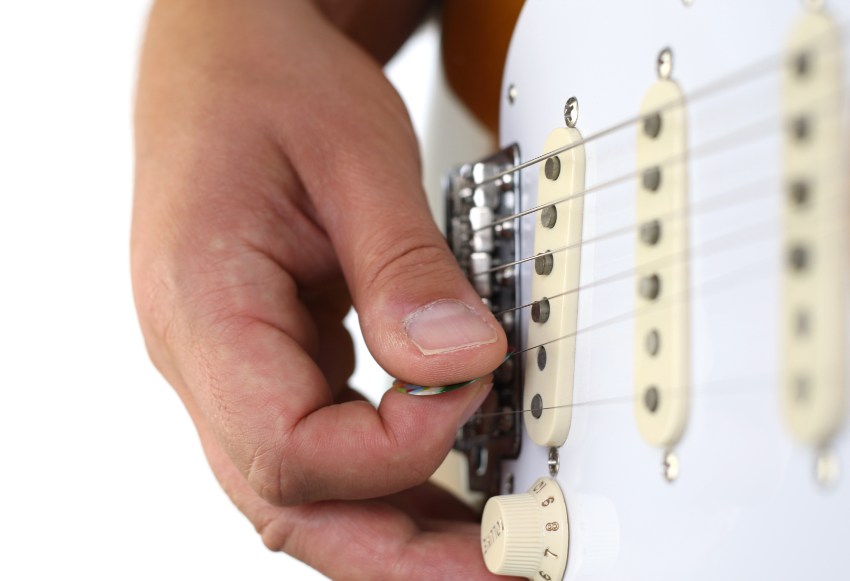
What construction types are there?
With the development of modern music and the emergence of ever-new guitar designs, the construction and operation of pickups have been continuously refined and adapted. Today, five pickup types are distinguished based on their construction and operation. We’ll introduce the most important representatives and their characteristics.
Single-Coil
The single-coil is essentially the ancestor of all pickups and forms the basis for all subsequent pickup variations. It gained special significance through its use in the Fender Telecaster and its successor, the Stratocaster. Its somewhat twangy, treble-rich sound is still considered unparalleled, especially in the opinion of jazz, blues, and country guitarists. However, the single-coil, consisting of just one coil, has one drawback: Due to its construction, it is susceptible to signal interference, which manifests as a resonant hum in the signal.
Humbucker
Humbuckers were developed in response to the described tendency of single-coils to produce hum (or noise). They consist of two coils wound in opposite directions, placed around centrally located magnets. The patent introduced by Seth Lover and Walter Fuller in 1957 was initially used by the Gibson company and quickly became the leading pickup design for the guitar manufacturer. The advantages of the humbucker, in addition to its “humbucking” capability, include its full, midrange-focused sound.
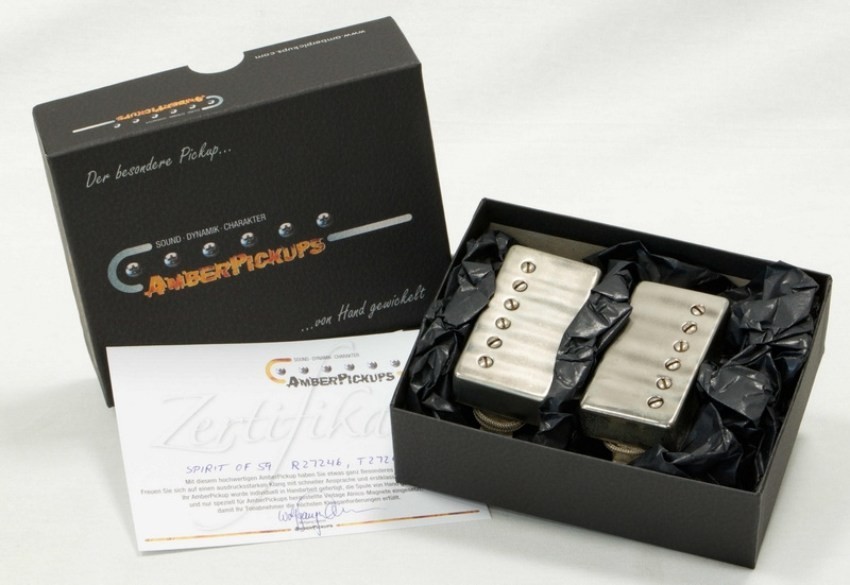
P90
The P90 pickup was developed and used by Gibson as early as 1946. In terms of functionality, it is a single-coil pickup but is somewhat bulkier and wider due to its construction. Instead of cylindrical magnets, it typically uses bar-shaped magnets equipped with six pole pieces. The coil is usually wound very tightly, with 10,000 windings being common for P90 pickups. The resulting guitar sound is somewhat thicker and more substantial than that of traditional single-coil pickups, although it typically does not match the assertiveness of a humbucker pickup.
Active pickups
These function similarly to the models introduced earlier, with one significant difference: they use an integrated electronic preamp to shape the guitar’s signal. Besides being powered by a 9V battery, active pickups also incorporate active circuits.
The advantage of active pickups lies in their adjustable output level and the ability to tailor the output’s frequency response. For guitars, it’s common to lower the bass and treble while boosting the midrange frequencies to create a more assertive guitar sound. This is a popular technique in the rock genre. When combined with distorted amplifiers, this kind of sound processing adds clarity and tonal breadth to the music.

Piezo-Pickups
Piezos are typically used to amplify acoustic instruments and provide the means to capture their sound through amplifiers. However, the functioning of piezo pickups differs fundamentally from the operation of a humbucker or single-coil pickup.
Instead of electromagnetic induction, piezo pickups use sensors that are pressure-sensitive and convert vibrations into electrical signals. They are also used in electric guitars, where they are placed on the bridge of the guitar, converting the pressure differences generated by the vibrating strings into electronic signals.
We hope that we could shed some light on the question of how pickups work and encourage you to explore the world of these fascinating and important guitar components.
______________________________________________________________________________________________________________________________
Image sources:
Title image: © tputman151 – stock.adobe.com
Gibson ES-150: By Europe guitar collection – Own work, CC BY-SA 4.0, https://commons.wikimedia.org/w/index.php?curid=91089188
Guitar closup: © Kartika – stock.adobe.com
G&B Beitragstitelbild mit Foto © Dieter Stork
Guitarist plucks a string: © Jana Behr – stock.adobe.com
The guitarist strikes the guitar on the stage: © KONSTANTIN SHISHKIN – stock.adobe.com
Copyright:
Fender® und Stratocaster® are trademarks of the Fender Muscial Instruments Corporation
Gibson® is a registered trademark of the Gibson Guitar Corporation
 Tubeampdoctor Magazin
Tubeampdoctor Magazin
